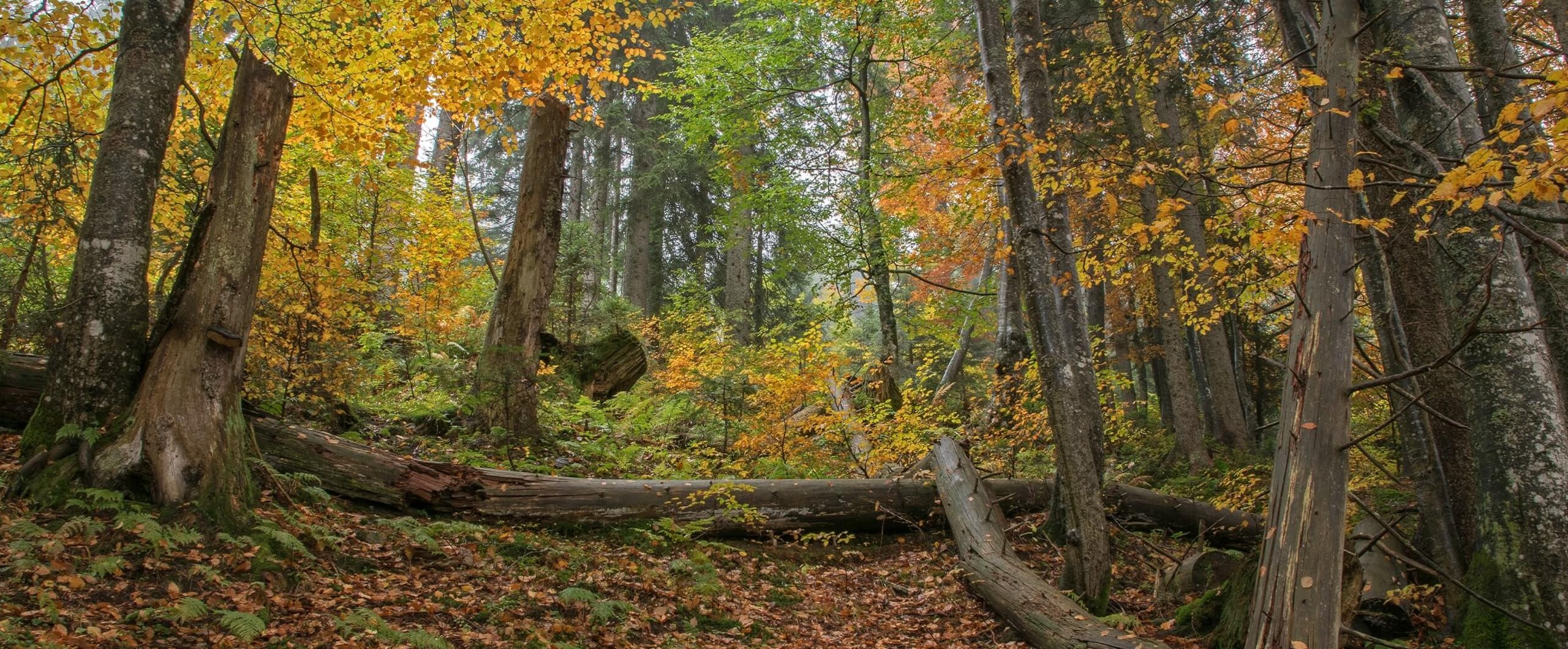
Not all forests are the same. Depending on altitude, location and type of cultivation, different forest types can be experienced in the Upper Allgäu, which are inhabited by very different animals and plants. Near-natural forests are found mainly in steep northern slopes of the Nagelfluhkette, in the high altitudes of the Flysch mountains and in the gorges of the Bregenzerwald. While mixed forests of deciduous trees and conifers dominate at lower altitudes, spruce plays a central role at higher altitudes. Above the timberline is the region of the Krummholzstufe with its green alders, mountain pines, alpine roses and berry bushes.
Forests of the valleys and medium heights
By nature, in the Oberallgäu up to an altitude of about 900 meters deciduous trees dominate with the copper beech (Fagus sylvatica) as the main tree species. However, the forests in the valleys and partly also in the middle mountain areas have been heavily overgrown by forestry in the last 100 years. The spruce (Picea abies) in particular has benefited from this. For a long time, the coniferous tree was considered the bread tree of the farmers, and thus the mixed forests were partly transformed into species-poor spruce forests.
Between 900 and 1,300 meters above sea level, spruce naturally mixes increasingly into the forest picture and eventually becomes the predominant tree species. At this altitude level, a species-rich mixed mountain forest grows in many places from Spruce, copper beech and silver fir (Abies alba), which is home to numerous animal species that have become rare in Central Europe. For example, white-backed woodpecker (Dendrocopos leucotos), hazel grouse (Tetrastes bonasia), capercaillie (Tetrao rogallus) and red deer (Cervus elaphus) live in the mid-mountain forests. These mountain forests are also of particular importance for the people of the valley regions. They stabilize steep slopes, prevent avalanches and mudslides, store water and protect against erosion. As protective forests, they thus ensure that people can settle safely in their villages. Forestry has also recognized this: In order for the forest to be able to fulfill its protective function on steep slopes even in times of climate change, conversion to a species-rich mixed mountain forest is now being promoted in many places in the Oberallgäu.
Plenter forests - a near-natural form of forest management
These forests are permanent forests, from which only individual, large trees are removed. In addition to strong silver firs and copper beeches, numerous smaller trees also grow. Since the offspring is already ready when one of the giant trees is felled, regeneration and renewal runs by itself, as it were. Since no clear-cutting takes place in plenter forests, they can retain their near-natural character for centuries.
Ravine and riparian forests - species-rich special sites
The gorge and riparian forests are the most species-rich forest habitats in the Oberallgäu. Since they are difficult to manage, they are often still very close to nature. In addition to copper beech, ash trees (Fraxinus excelsior), summer lime trees (Tilia platyphyllos), mountain elms (Ulmus glabra), Norway maples (Acer platanoides) and sycamores (Acer pseudoplatanus) thrive in the gorges. Also, the silver fir widespread. In the shady undergrowth of the forests are sporadically yews (Taxus baccata) and hollies (Ilex aquifolium).
The floors of the forest
A near-natural forest is made up of several floors, each of which provides a habitat for very different animal and plant species. The lowest floor is the soil and moss layer. It is home to countless small soil organisms that decompose organic material. This is followed by the herb layer. In it grow plants that either bloom very early in the year or adapt well to the light poverty in the summer forest are adapted. The shrub layer includes the shrubs and young trees growing in the forest. The uppermost storey forms the tree layer. The crowns of the trees can reach more than 30 meters into the sky.
Mountain forests of high altitudes
Between 1,300 and 1,750 meters above sea level, spruce is the dominant tree species. Occasionally, silver fir, copper beech and sycamore maple are also found. In the shrub layer, blueberries (Vaccinium myrtillus) and bilberries (Vaccinium uliginosum) grow, and occasionally alpine roses (Rhododendron sp.). The spruces of the higher altitudes are mostly slender trees with narrow crowns and drooping side shoots. This keeps the bearing surface for snow loads low - an adaptation to the harsh living conditions in the snowy high mountains. At the tree line at an altitude of about 1,750 meters, the spruces are then often only as tall as a man.